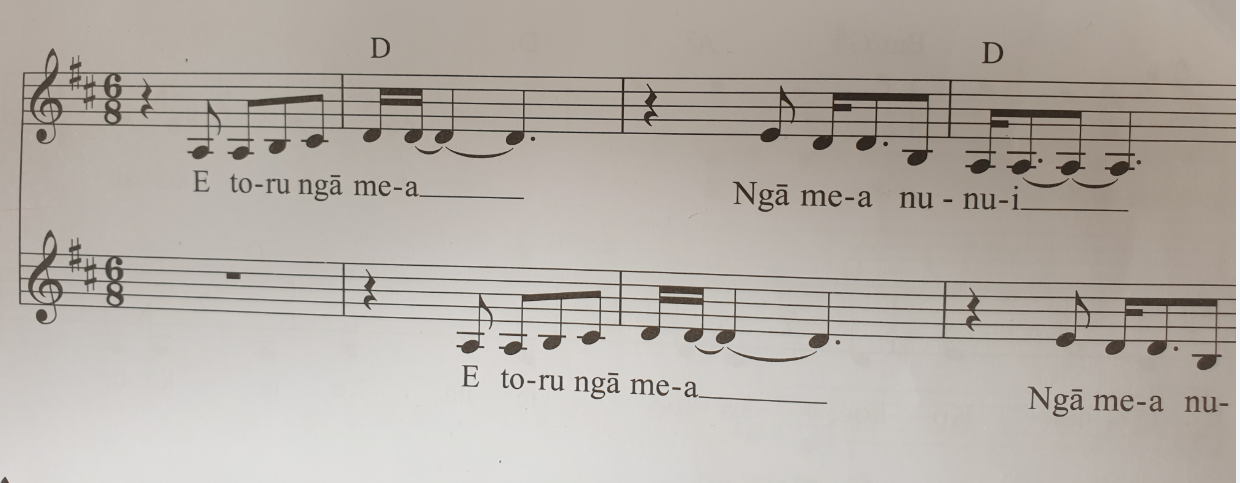Thanks for the notation image!
Originally Posted by: deanbadamThanks Chris. So the dotted 1/8 note would fall on the up strum?
[br]First, let's get clear on what you are trying to do. In my previous post I'm only referring to how to
count the musical events. This has nothing to do with strumming patterns, or playing the music on the guitar.
Downbeat simply means the beats on the counted numbers: 1-2-3, etc. You can play a downbeat note or chord with a downstrum or upstrum depending on what is most efficient to physically play any given piece of music in real time.
Upbeat simply means the beats in between the counted numbers. Likewise, you can play an upbeat note or chord with a downstrum or upstrum.
Second, what we are discussing is only the vocal melody. Now you can play the vocal melody on the guitar, in which case you need to know the rhythms, but even then it does not translate to a strumming pattern.
In most cases you are going to use the guitar to accompany the vocal melody. So you are not going to match the vocal melody exactly. You are going to play something that compliments it. Especially in this case, if you only strummed when the vocal melody sang a note, you'd get a lot of "dead air": time when you aren't doing anything because the vocal melody is resting or holding a note. But the entire point behind an accompaniment part is to provide a constant background rhythm & harmony.
For example:
https://www.youtube.com/watch?v=Jwr5UEIaRo4
The guitar is accompanying the vocals. If you count it in 6/8, then it is playing a constant chord strumming pattern on beats 1, skipping 2 & 3, playing on, 4, 5, 6. This serves as a constant rhythmic & harmonic background for the melody to "float over". Make sense?
Having said all that, yes, you have the rhythm of the vocal melody right!
Christopher Schlegel
Guitar Tricks InstructorChristopher Schlegel Lesson Directory
